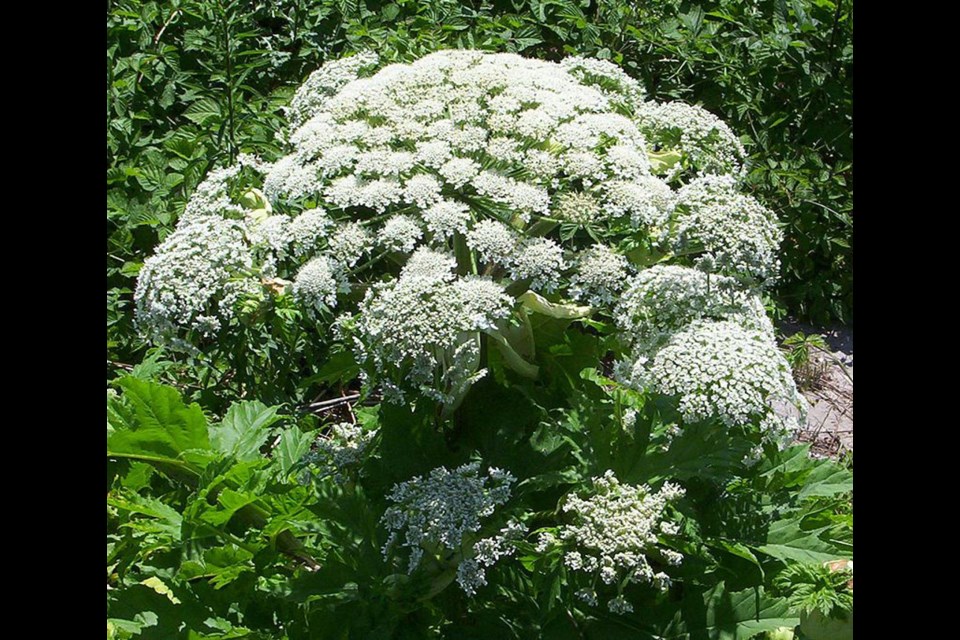Large and flowered, giant hogweed is an impressive-looking plant, but it is not your friend.
The large plant has been in Greater Sudbury at least since 2010, when the first sighting was reported. Giant hogweed is an invasive species, the sap of which becomes toxic to humans if it gets on the skin and is exposed to sunlight.
The perennial herb is native to the Caucasus Mountains in southwest Asia, but was likely brought to North America in the first half of the 20th century, possibly as an ornamental plant. It has been cutting a wide swath through Ontario and B.C.
Hogweed can grow as high as 14 feet and can cause blindness if the sap gets in the eyes and is exposed to the sun. While big and impressive, hogweed has a similar appearance to other plants in the carrot family, to which it belongs.
Most often, hogweed is confused for cow parsnip. And while the plants are certainly different, they do share a common trait: the phototoxicity of the sap. Sap from both plants can cause burns when exposed to sunlight.
So while it's best to avoid coming into contact with both plants, here's how you can tell them apart.
Hogweed can grow as high as 20 feet, while cow parsnip maxes out around eight feet. Hogweed leaves are huge, up to five feet wide. Parsnip leaves are much smaller, hitting about half that. The leaves are slightly different, however. Hogweed leaves are lobed and resemble a hand and fingers, while parsnip leaves more closely resemble a maple leaf.
The flowers of both plants are a similar umbel shape (rounded white flower clusters, with individual flower stalks rising from about the same point on the stem), though hogweed flowers are around twice as large.
In 2015, five children in England were reportedly burned in two separate incidents after coming into contact with giant hogweed in public parks.
"Giant hogweed ... poses a real human health concern," the Nature Conservancy of Canada said in a release on Friday.
Dan Kraus, a biologist with the conservancy, said the invasive Asian species likely arrived in Canada in the 1940s as an ornamental plant.
"A single plant can produce thousands of seeds and it can spread quickly. The seeds are dispersed when they fall into rivers and streams, and can be dispersed short distances by the wind. Because it's a tall perennial, giant hogweed can take over large areas along rivers and streams, shade out all of our native vegetation and actually nothing can grow under it sometimes," Kraus said in a statement.
"In Europe, dense stands of giant hogweed along rivers have caused erosion and it has been identified as a serious threat to salmon spawning habits in Great Britain."
But simply touching the plant is not dangerous, experts stress. It's the sap that is problematic and washing your body and clothes after exposure can prevent the toxic reaction.
Kraus encourages people to report a sighting via the iNaturalist.ca app.
In Sudbury, if you see a plant you suspect is giant hogweed on city property, call 311 to report it. The city will send workers out to remove the plant. If the plant is on your property, you'll have to remove it yourself. The city does offer instructions on its website on how to safely do that.
For an online map of the spread of giant hogweed, click here.
-With files from the Canadian Press
